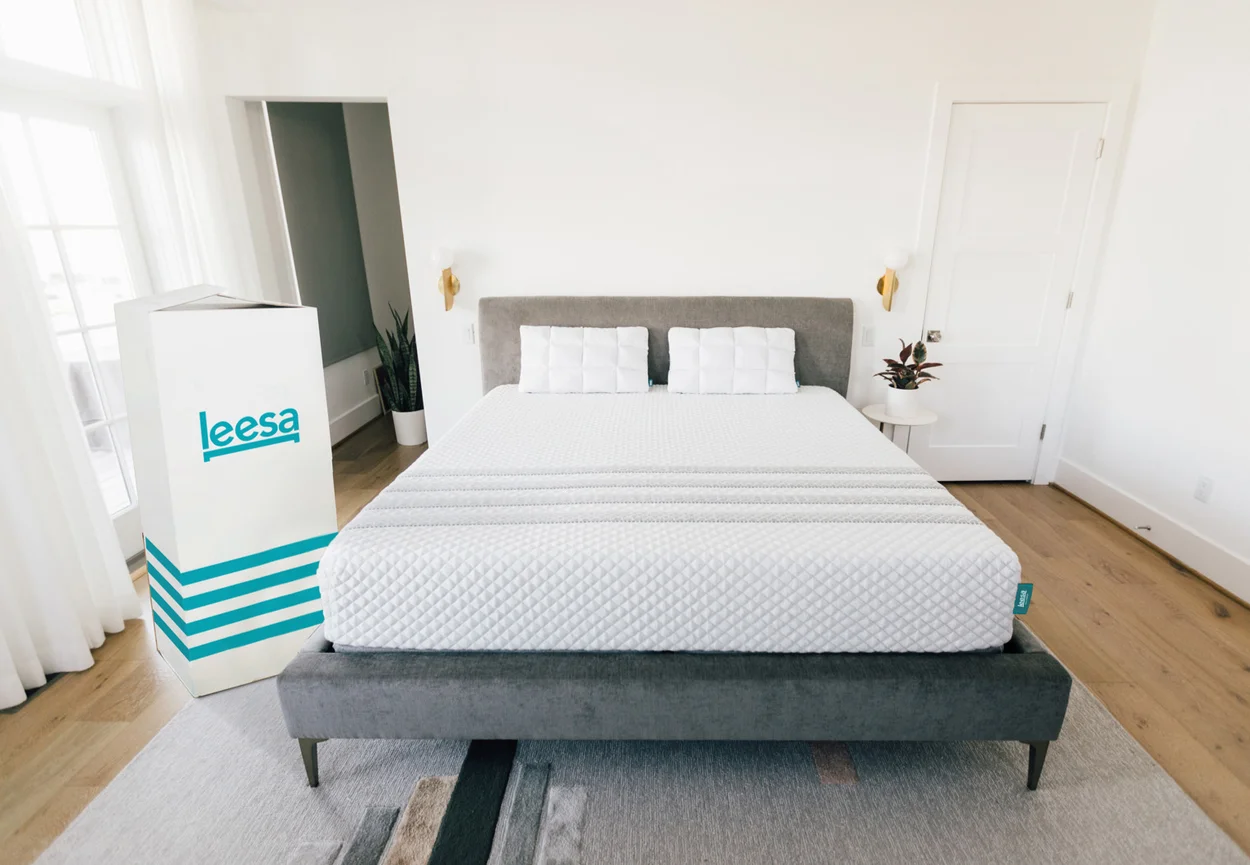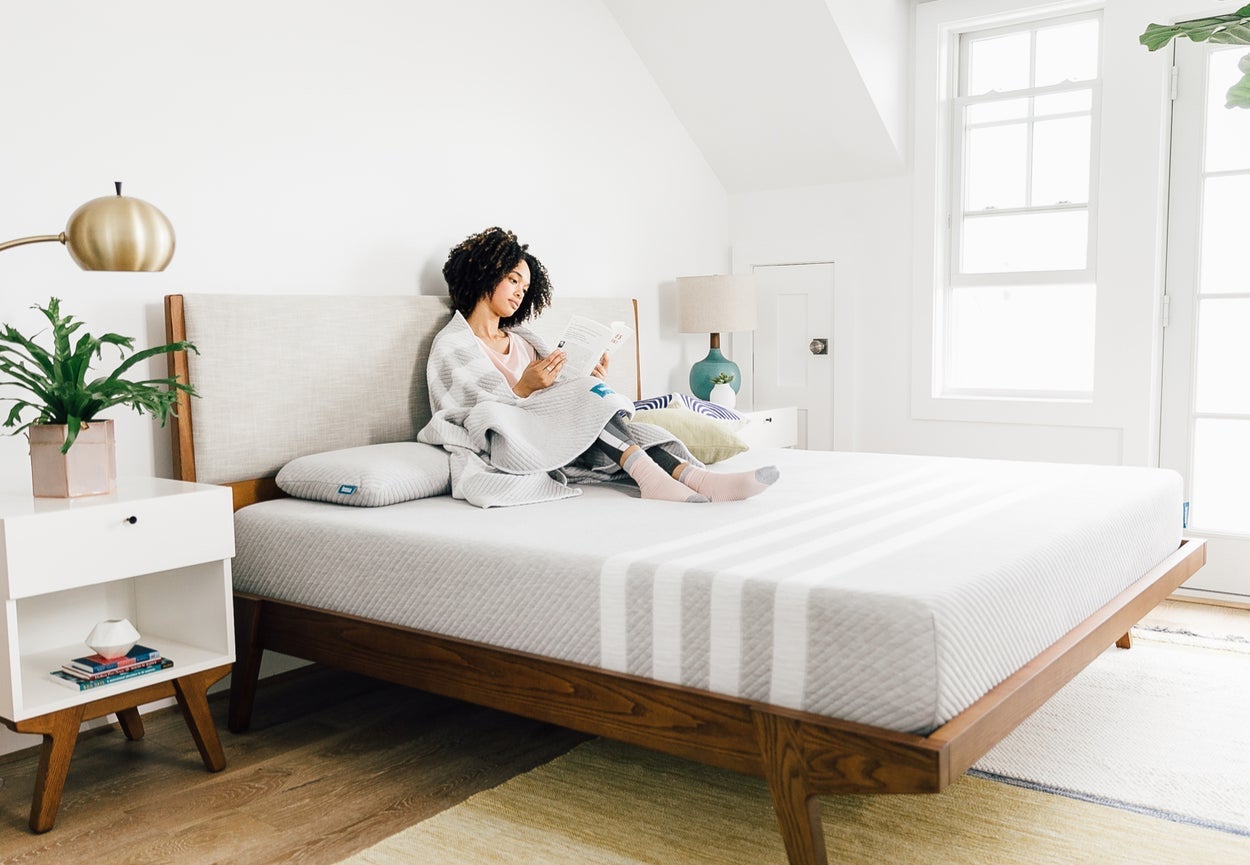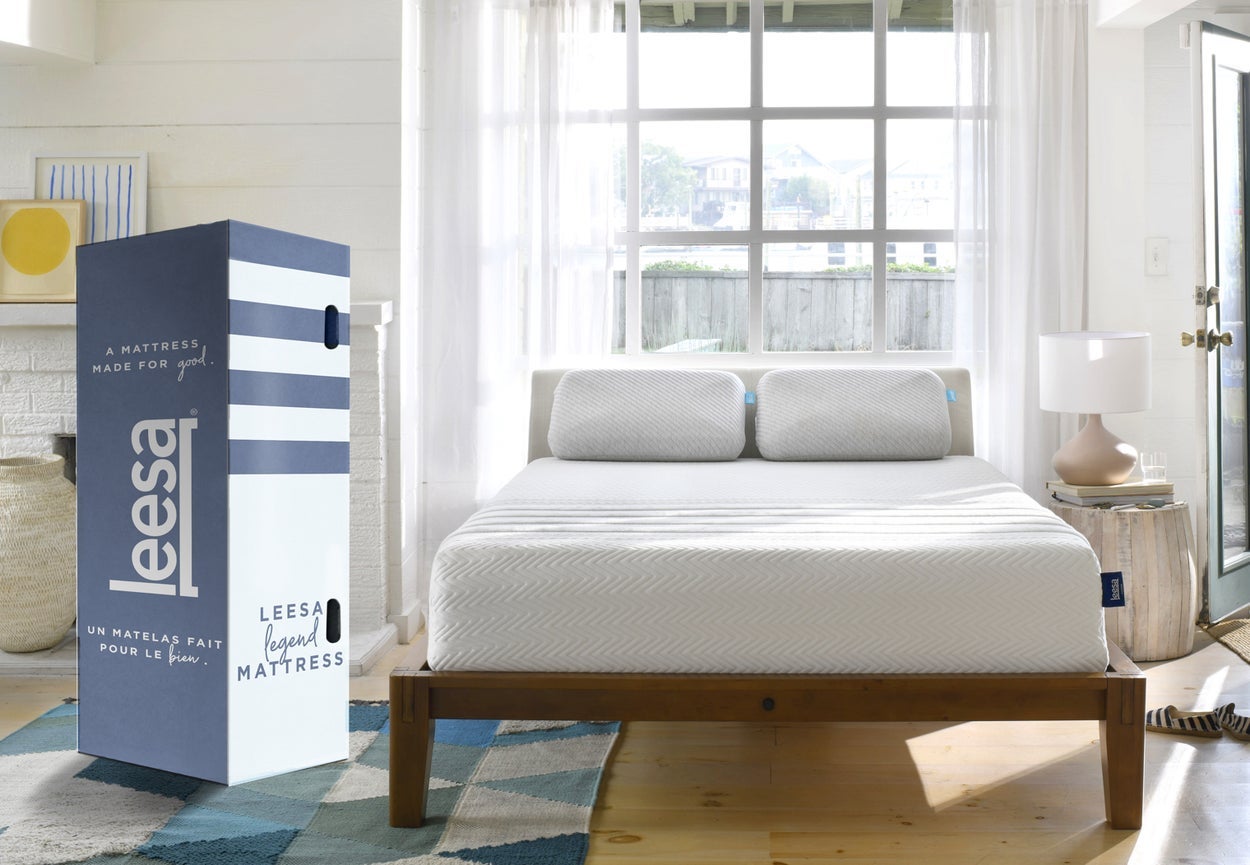So, You Say You “Can’t Nap” — But Have You Tried This?
Waking from a nap, for me, feels precisely as I imagine it might feel to rise from the dead: bleary, disorienting, and a bit like I’ve begun quietly decomposing in the time since my last bout of consciousness. In fact, my post-nap state tends to resemble some specific genre of unprecedented hangover, the likes of which will generally render all other daytime productivity near impossible. And that is, of course, if I can fall asleep in the first place — the process of which acts as its own insurmountable hurdle. Long story long: I am firmly nap-opposed.
The anti-nap stance is not exactly the general consensus, though. According to the National Sleep Foundation, around four in every 10 Americans report napping at least once a week. And there's been plenty of claims about the benefits: In 2009, researchers at U.C. San Diego determined that REM naps can enhance creativity. And in 2016, the University of Michigan found that an hour-long nap could work wonders to help people regulate their emotions.
AdvertisementADVERTISEMENT
So, upon entering month #9 of remote work, and year 26 of listless fatigue (read: forever), I finally determined to revise my position on napping — a project that would require I learn how to properly nap in the first place.
“Napping is a bit like snacking,” says W. Chris Winter, MD, a sleep researcher and neurologist based in Charlottesville, VA (he’s been called the "Sleep Whisperer"). “If you get a solid, full night's sleep, you shouldn’t need a nap.” Before you go all in on your nap time agenda, he recommends that you address your nighttime sleep: Try a meditation, carve out a full 8-10 hours for slumber (it's possible!), or go the chic, millennial route and order yourself a soft, new, eco-friendly, direct-to-consumer mattress. Then, when all that's said and done, if midday sleep still feels essential, Dr. Winter has plenty of advice.
To start, he recommends letting go of the idea that you should entirely lose consciousness in order for your nap to count. “If you stress yourself out over whether or not you’re passing out completely, odds are you’ll keep yourself awake. Instead, just decide to rest. Resting is restorative whether or not you’re unconscious,” he says. “Take off your shoes, think about what you’re getting your mom for her birthday, a vacation you plan on taking, a TV show you’re watching.”
Unfortunately for proponents of the 6 p.m. disco nap, there are some best practices surrounding when you actually choose to rest. According to New York-based sleep psychologist Joshua Tal, PhD, “The best time to settle in for a nap is around 2 or 3 p.m. This is the place in your circadian rhythm where your body tends to slow down. It’s when you’ll need a boost of energy the most. But it's early enough that you likely won't keep yourself up at night."
AdvertisementADVERTISEMENT
When napping in the confines of your own home (as opposed to, say, under your desk), Dr. Winter also suggests that you go through the motions of your normal bedtime routine. “Your brain is trained to associate these [routines] with sleep,” he says. “Even if you’re just planning to rest for 30 minutes.” It’s the whole Pavlov’s Dogs phenomenon: If you change into pajamas, brush your teeth, and climb under one particular blanket each night, your brain learns to associate those precise things with the act of falling asleep.
Moreover, interior designer and feng shui consultant Laura Cerrano harps on the fact that your sleep space should be used just for sleep. In the same way putting on pajamas will help remind your brain that this is bedtime, curating a space that’s exclusively for slumber — whether it’s a nap or nighttime sleep — will help you drift off as soon as you crawl into bed. “In a bedroom, you want a high-quality mattress, great sheets, soft lighting, maybe a diffuser or a sound machine. Elevate your space, then make it feel sacred,” she says. Which is to say, for those of us working remotely, your bed should likely not operate as your desk.
Unfortunately, this is not a philosophy by which I have lived my life. I write from my bed. I take calls. I watch movies. On occasion, I eat cereal, which is generally a thing I regret if I have cause to make any sudden movements.
AdvertisementADVERTISEMENT
So, per Cerrano’s recommendations, I set out to revamp my bedroom — a process that began with the disposal of my mattress...which, I might add, was a hand-me-down from my mother’s childhood bedroom. Apparently, this is bad for you (a mattress typically has a shelf life of seven to 10 years before the springs wear out and germs begin to collect in the fabric). So, I swapped out the vintage relic for something new: a "hybrid" Leesa made with memory foam and coils — which I’d heard, on good authority, was essentially the Meryl Steep of mattresses (that is to say: unequivocally the best).
For the sake of *ambiance,* I invested in an array of off-brand bodega incense sticks and a new set of Parachute sheets — my editor had long told me they were unrivaled — and, after enduring the hellish strangulation process that is placing a duvet effectively inside of a duvet cover, I was ready to begin my experiment.
The Experiment:
Allow me to set the scene: Saturday. Early November. 2 p.m. Mildly (but not lethally) hungover. With respect to my routine, I’d changed into a full pajama set: a sweatsuit from Entireworld that is not the color of actual mustard but rather the color of a crayon called mustard. I'd moved all my ever-so-tempting screens out of reach, and I'd foregone a morning coffee for a Gatorade (electrolytes, baby). I was ready to begin. So, I climbed into bed.
AdvertisementADVERTISEMENT
Three minutes passed. I was still awake.
Five and a half minutes passed. Lo and behold, I was still awake.
For the sake of efficiency, I began to enumerate the 11 ambitious tasks I planned to squeeze in before my dinner plans (do dishes, take pants to tailor, journal, call mom). Shockingly enough, this did not lull me immediately into a sound sleep.
I wondered, sans prompting, when my passport expired (I did not know the answer). It occurred to me then that I also did not know where my passport actually was. This struck me as problematic.
Maybe I should check my email, I thought. I shouldn’t. Or should I? I shouldn’t. I might be hungry. I was probably hungry. I changed positions. I wondered if that Thai place still had that one lunch special. Maybe I should get a humidifier? Or a jade roller? What is a jade roller? Am I getting enough vitamin D? Is anyone getting enough vitamin D?
Then, a plot twist:
35 minutes later, I woke up to the hellish jingle of my phone alarm. Somehow, unbeknownst to me, I’d fallen asleep.
Much to my chagrin, I’d intentionally left my phone in the living room. According to Dr. Winter, the key to emerging from a nap without feeling like you're returning from a traumatic acid trip is exposing yourself to light and introducing motion almost instantly. Hence, setting an alarm you must physically stand up to silence.
Upon restoring myself to a vertical position, however, I noticed something: I felt alright! In the 35 minute duration of my nap, the world hadn’t caught fire. I hadn’t hallucinated. I hadn’t missed out on the second coming of Christ. I can’t say I felt incredible — that I’d tripled my energy and was now penning a self-help book — but I felt okay! This was progress!
AdvertisementADVERTISEMENT
“A nap isn’t this magic thing,” says Dr. Tal. “If you need it, it should give you a boost. But if you wake up feeling groggy, that’s okay. Allow yourself to be a little sleepy; you’ll hit your stride. Don’t take it as seriously as you would nighttime sleep. Doze off, daydream, close your eyes for a few minutes, but don’t allow it to become another stressful thing on your to-do list.”
So, while those of us not naturally inclined toward napping will surely continue to find ourselves surrounded by folks glorifying nap time as the Champagne of slumber, we don’t have to buy in. If you’re getting sufficient sleep at night, there’s absolutely nothing wrong with avoiding the whole act of napping altogether. But, on the occasion that your body really does need a little midday restoration, there’s something to be said for leaning in.
Shop the Leesa holiday sale before December 7 for up to $500 off plus two free pillows with your order. And better yet, rest easy knowing the company will donate a mattress to a child in need for every mattress you buy.
AdvertisementADVERTISEMENT










